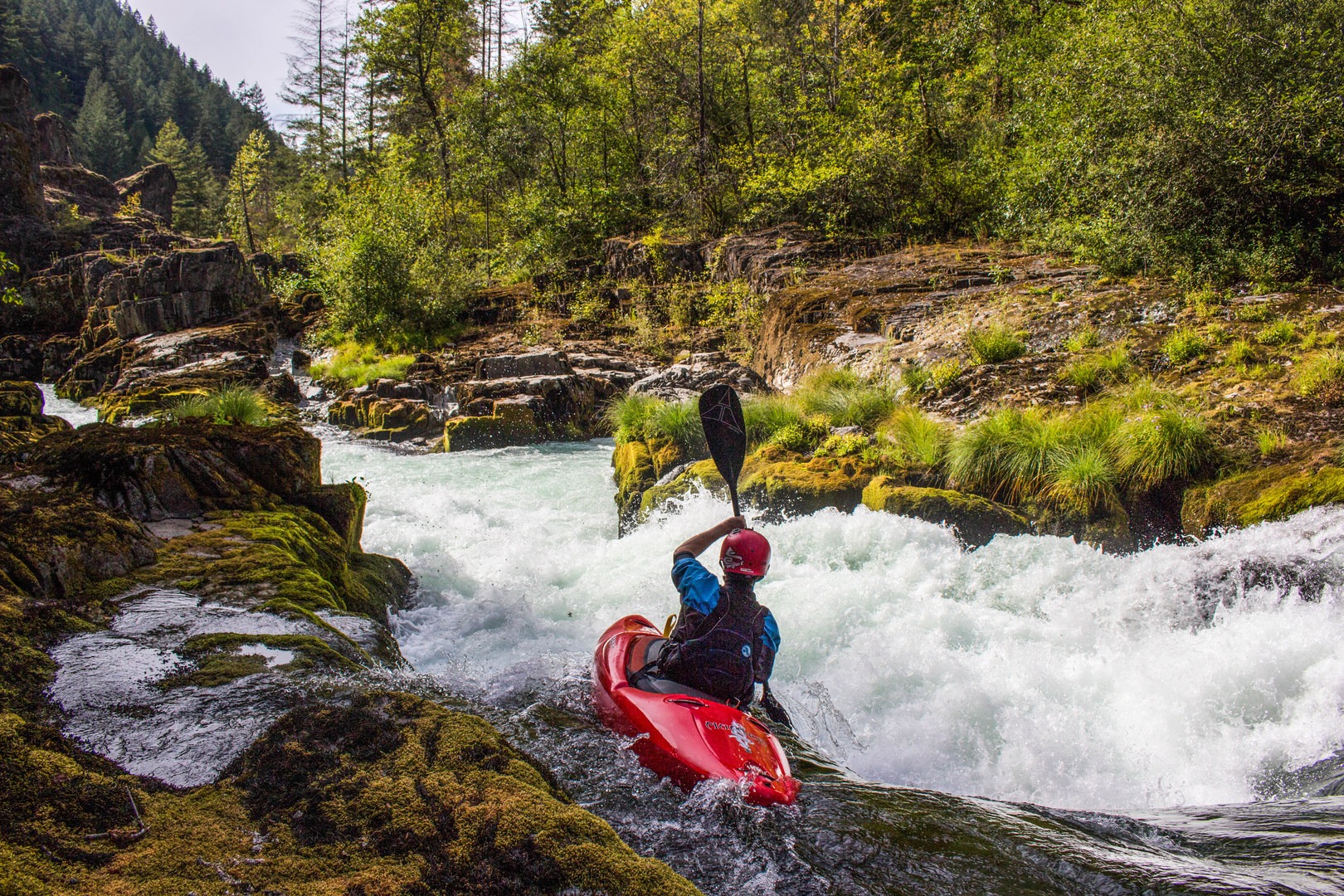You are here
The North Santiam River runs year round and provides a great resource for paddlers, even in the driest summer months. Since the run is dam controlled, it never drops below 900 cfs.
There are four sections that are frequented by paddlers, the Niagara section being the most challenging and the most scenic. This section is complemented by large rock formations, clear water, and forest scenery.
The put-in for the Niagara section is at the large gravel pullout just below Big Cliff Dam on Highway 22. There are a handful of read-and-run rapids before reaching the rapid above the Narrows. The Narrows is the first of two more difficult rapids on the run, both varying in difficulty depending on the flow. The rapid above the Narrows is wide and can be run pretty much anywhere, but most paddlers like to finish along the right side of the river, crashing through a small hole at the bottom. Immediately below this rapid, paddlers eddy out on the right in the pool above the Narrows. It is easiest to scout, portage and set safety on the right side of the river.
Paddlers generally run far left at the top of the Narrows to avoid the large hydraulic in the middle of the entry ledge. The left wall is also worth a look when scouting, as the boils push debris toward a cleft in the wall at medium to higher flows.
Downstream of the Narrows is a calm pool and a few more interesting read and run rapids. Keep an eye out for a neat boof or two. The next major rapid, Niagara, varies in difficulty based on the flow. At high flows this is the most formidable rapid on the run. The rapid was named in the late 1800s when a rock dam was constructed at the narrow pinch in the river. Though the project was abandoned in 1912, parts of the structure still remain and can be seen at the County Park located on the right side of the river.
The entrance to Niagara is marked by a large cliff wall on river right. The lead-in rapid is generally run down the middle, moving left as the river turns left. Catch an eddy on the left to scout the Niagara slot. The main hazard of the slot is not paddling far enough to the right and getting pushed into the left pocket at the entrance. It is also difficult to set safety. If necessary, a moderately strenuous portage can be done on the left and up the cliff wall.
Note that if you choose to raft this section, you will need to plan a take-out above Niagara or plan a creative portage as the slot is only wide enough for Kayaks.
Past the entrance slot, paddlers are rewarded with a beautiful gorge with large overhanging walls and swirling currents. In the summer this is a popular swimming hole and cliff jumping spot. During high flows (about 4,000 cfs), this section quickly becomes Class V in nature with massive hydraulics.
Below the Niagara gorge there are a few more read and run rapids and a few on-the-fly play spots. The next feature you reach is the Packsaddle Dam. The dam has been run, but it is a serious hazard with a lethal hole, so portaging is recommended. There is a portage path on river right marked by signs at the dam facility. You can often see fish jumping and swimming at the dam site.
From the dam there is a short paddle to Packsaddle Park, which is an easy take-out on the right. An alternative would be to continue down to Spencer’s Hole, which is a fun play wave and considered one of the best play spots in the state. If your take-out is here, be sure to be respectful of landowners’ property. There is a path that has been made for boaters to take-out on, and other areas might be privately owned.
Logistics + Planning
Current Weather: Powered by Dark Sky






























Comments
Sign In and share them.